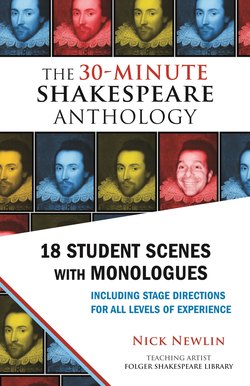Читать книгу The 30-Minute Shakespeare Anthology - William Shakespeare - Страница 22
На сайте Литреса книга снята с продажи.
ОглавлениеHENRY IV, PART 1: PERFORMANCE NOTES
I directed this performance of Henry IV, Part 1 in 2008 with a group of high school seniors. Young actors love this production for its generational conflicts. The clash between the older and younger characters is particularly attractive to adolescents and young adults.
As detailed in the “Performing Shakespeare” essay, performers and directors can use Wordle.net (www.wordle.net/create) to create a “word cloud” graphic that emphasizes which words appear with greatest frequency in a character’s speech. Actors can use this information to color their words and shape their characters. What others say about a Shakespearean character provides additional clues as to his nature—and allows us to a portray a three-dimensional living, breathing person, with faults as well as good qualities, i.e., someone like ourselves!
HENRY IV, PART 1: ACT III, SCENE II
Interestingly, art imitated life in this short scene (Act III, Scene II) during our production of Henry IV, Part 1. The actor playing Hal in this scene had recently been expelled from school and then reinstated. He had just spent a lot of time apologizing for his behavior, and now he was playing a son apologizing for the same. Needless to say, I encouraged him to use recent occurrences as inspiration as his character begged for his father’s pardon.
We do not always have the opportunity for the play’s exact mirroring of our own experiences, but with a bit of searching, it is not difficult to find conflicts in our own lives or others’ that are similar to those in Shakespeare’s texts. Sometimes it takes imagination or a metaphorical leap. In this particular case, the young actor playing Hal simply had to act the same way he had been acting in his real life: genuinely contrite and apologetic. When he stood up and looked straight out at the audience, saying, “This, in the name of God, I promise here,” I believed he meant it.
There is no secret answer to how to prevent the unexpected in theater, nor are we guaranteed the audience response we desire. But by delving into the text, committing to the characters, and playing with passion, your group can deliver a production that not only brings joy and satisfaction to audiences, but also builds performers’ confidence, opening them up to the vivid worlds that Shakespeare creates. Henry IV, Part 1 is a magnificent story of a young king and his friends—but it is also a story about how we all grow up and, in doing so, change.
